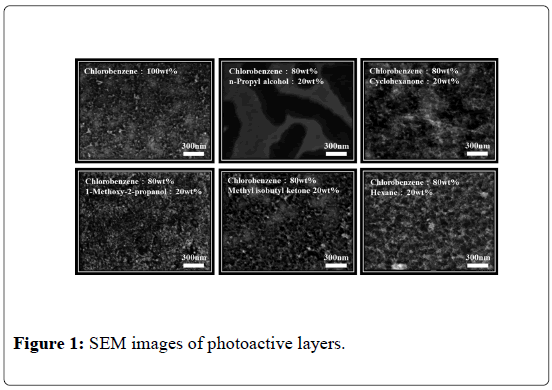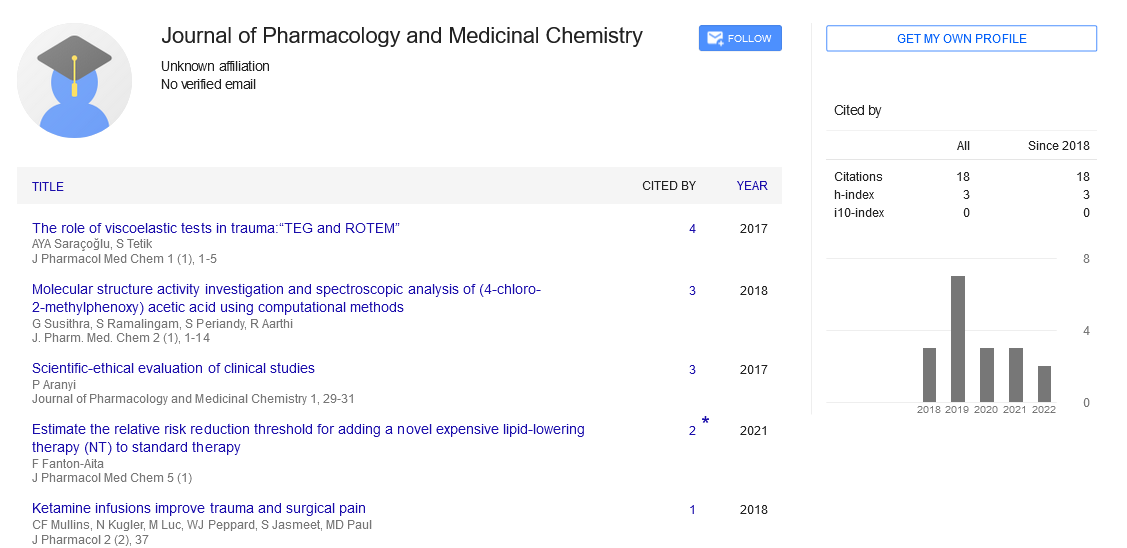Morphology control for nano-phase separation structures
Received: 03-Nov-2017 Accepted Date: Nov 04, 2017; Published: 10-Nov-2017
Citation: Kato T. Morphology control for nano-phase separation structures. J Chem Bio and Med Chem. November-2017;1(1):2.
This open-access article is distributed under the terms of the Creative Commons Attribution Non-Commercial License (CC BY-NC) (http://creativecommons.org/licenses/by-nc/4.0/), which permits reuse, distribution and reproduction of the article, provided that the original work is properly cited and the reuse is restricted to noncommercial purposes. For commercial reuse, contact reprints@pulsus.com
In recent years, morphology control has emerged as an important research topic in many fields such as chemistry, biology, and medicine for the development of highly efficient materials and functional structures of devices based on organic and inorganic materials and their hybrids. Once developed, these techniques will pave the way for a wide range of possibilities such as the creation of highly efficient novel functional structures in many research fields. Here, I describe the methods for morphology control of nano-phase separation structures in the photoactive layer of organic thin-film solar cells and organic-inorganic hybrid thin-film solar cells from the viewpoint of chemical engineering and electrochemical fields [1-3].
In typical organic thin-film solar cells and organic-inorganic hybrid thinfilm solar cells, the photoactive layer is composed of bulk heterostructures of a p-type semiconducting material as the electron donor and an n-type semiconducting material as the electron acceptor [4]. The photoactive layer is formed by dissolving the p-type and n-type semiconducting materials into an ink. The photoactive layer is capable of light absorption, exciton generation and diffusion, charge separation, and transportation. Therefore, phase separation of a bulk heterostructure is important, especially in terms of morphology control and the control methods [1-3,5]. The typical thickness of a multi-functional photoactive layer is of the order of a few hundred nanometers. Therefore, the bulk heterostructure formed inside the photoactive layer largely governs the characteristics of the layer. The photoelectrical energy conversion process can be explained as follows [6]. First, an organic polymer as the electron donor absorbs light, generating excitons. The generated excitons diffuse to the phase-separation interface between the electron donor and electron acceptor. An exciton splits into an electron and a hole as charge carriers via the charge separation process at the phase-separation interface. Individual electrons and holes then move into the n-type semiconductor phase and p-type semiconductor phase, until they reach the electrodes. Thus, the thin-film solar cell generates photoelectric current. The diffusion length of the exciton is approximately 10 nm; therefore, the domain size of the p-type semiconductor needs to be less than the diffusion length [7]. Moreover, in order to generate many holes and electrons as charge carriers by the charge separation process, many charge separation interfaces (p/n junctions) are required. Furthermore, each phase must be continuous in order to transport charge carriers across both the electrodes. Therefore, morphology control is important for smooth charge transport. Ideally, the morphology of the photoactive layer should be continuous and moderately fine. Many studies have reported on the morphology control of bulk heterostructures.
The most typical method involves changing the solvent that is used to dissolve the n-type and p-type semiconducting materials. The solvent for modifying the phase separation structure can be selected by considering the solubility of the n-type and p-type semiconductors or the deposition forces. Single solvents or solvent blends are then selected. For example, the morphologies of photoactive layers fabricated from several solvent blends with chlorobenzene were investigated by scanning electron microscopy; the resulting images are shown in Figure 1. For the solvent blend of chlorobenzene and n-propyl alcohol, the morphology was drastically different from those obtained with other mixture solutions. Morphology control has also been achieved by adding a small amount of additives. Some effects of various additive agents have been reported in some articles [8,9]. In some studies, heat-annealing treatment was applied to photoactive layers based on polythiophene derivatives as the electron donor [10,11]. This method accelerates the self-organization of the polymer structure to primarily improve its carrier transportation ability. Conversely, when a metal alkoxide that can dissolve into restrictive solvents is used as the electron acceptor, the molecular bulkiness of the metal alkoxide is utilized for morphology control [12,13]. Utilization of the difference in molecular weight of the polymer for phase separation control has been reported by many studies for polymer-polymer thin-film solar cells that employ polymers as the electron donor and acceptor (Figure 1) [14].
Currently, the energy conversion efficiency of printed organic thin-film solar cells has exceeded 10% [15]. Hence, it is expected that efforts will be invested to further develop them for commercial use. I described the complex role that morphology plays in functional layers of the order of hundreds of nanometers. Studies on morphology control and its methods need to be carried out for the development of more functional materials and devices that employ not only the two-ingredient system, but also three- or more-ingredient system. Finally, I expect that techniques of morphology control will immensely benefit novel developments in nanotechnology in various fields such as chemistry, biology, and medicine.
REFERENCES
- Campoy-Quiles M, Ferenczi T, Agostinelli T, et al. Morphology evolution via self-organization and lateral and vertical diffusion in polymer: fullerene solar cell blends. Nat Mater 2008;7:158-64.
- Schmidt-Hansberg B, Sanyal M, Klein M F, et al. Moving through the phase diagram: morphology formation in solution cast polymer–fullerene blend films for organic solar cells. ACS Nano 2011;5: 8579-90.
- Moulé AJ, Meerholz K. Morphology control in solution-processed bulk-heterojunction solar cell mixtures. AdvFunct Mater 2009;19:3028-36
- You J, Dou L, Yoshimura K, et al. A polymer tandem solar cell with 10.6% power conversion efficiency. Nat Commun 2013;4:1446.
- Kato T, Hagiwara N, Suzuki E, Nasu Y, Izawa S, TanakaK. Morphology control by the centrifugation method for bulk heterojunction solar cells. Int J ChemEngAppl 2016;7: 309-13.
- Tamai Y, Ohkita H, Benten H, Ito S. Exciton diffusion in conjugated polymers: from fundamental understanding to improvement in photovoltaic conversion efficiency. J PhysChemLett 2015;6(17):3417–28.
- Leow C, Ohnishi T, Matsumura M. Diffusion lengths of excitons in polymers in relation to external quantum efficiency of the photocurrent of solar cells. J PhysChem C 2014;118:71-6.
- Liang Y, Xu Z, Xia J, et al. For the bright future—bulk heterojunction polymer solar cells with power conversion efficiency of 7.4%. Adv Mater 2010;22:1-4.
- Peet J, Kim JY, Coates NE, et al. Efficiency enhancement in low-bandgap polymer solar cells by processing with alkanedithiols. Nat Mater 2007;6:497-500.
- Kim Y, Cook S, Tuladhar SM, et al. A strong regioregularity effect in self-organizing conjugated polymer films and high-efficiency polythiophene:fullerene solar cells. Nat Mater 2006;5:197–203.
- Swinnen A, Haeldermans I, D'Haen J, et al. Tuning the dimensions of C60-based needlelike crystals in blended thin films. AdvFunct Mater 2006;16:760-65.
- Kato T, Hagiwara N, Suzuki E, et al. Morphology control for highly efficient organic–inorganic bulk heterojunction solar cell based on Ti-alkoxide. Thin Solid Films 2016;600:98-102.
- Kato T, Oinuma C, Otsuka M, Hagiwara N. Morphology control for fully printable organic–inorganic bulk-heterojunction solar cells based on a Ti-alkoxide and semiconducting polymer. J Visualized Exp 2017;119:e54923.
- Benten H, Mori D, Ohkita H, Ito S. Recent research progress of polymer donor/polymer acceptor blend solar cells. J Mater Chem A 2016;4:5340-65.
- Li G, Chang WH, Yang Y. Low-bandgap conjugated polymers enabling solution-processable tandem solar cells. Nat Rev Mater 2 2017;2:17043.






